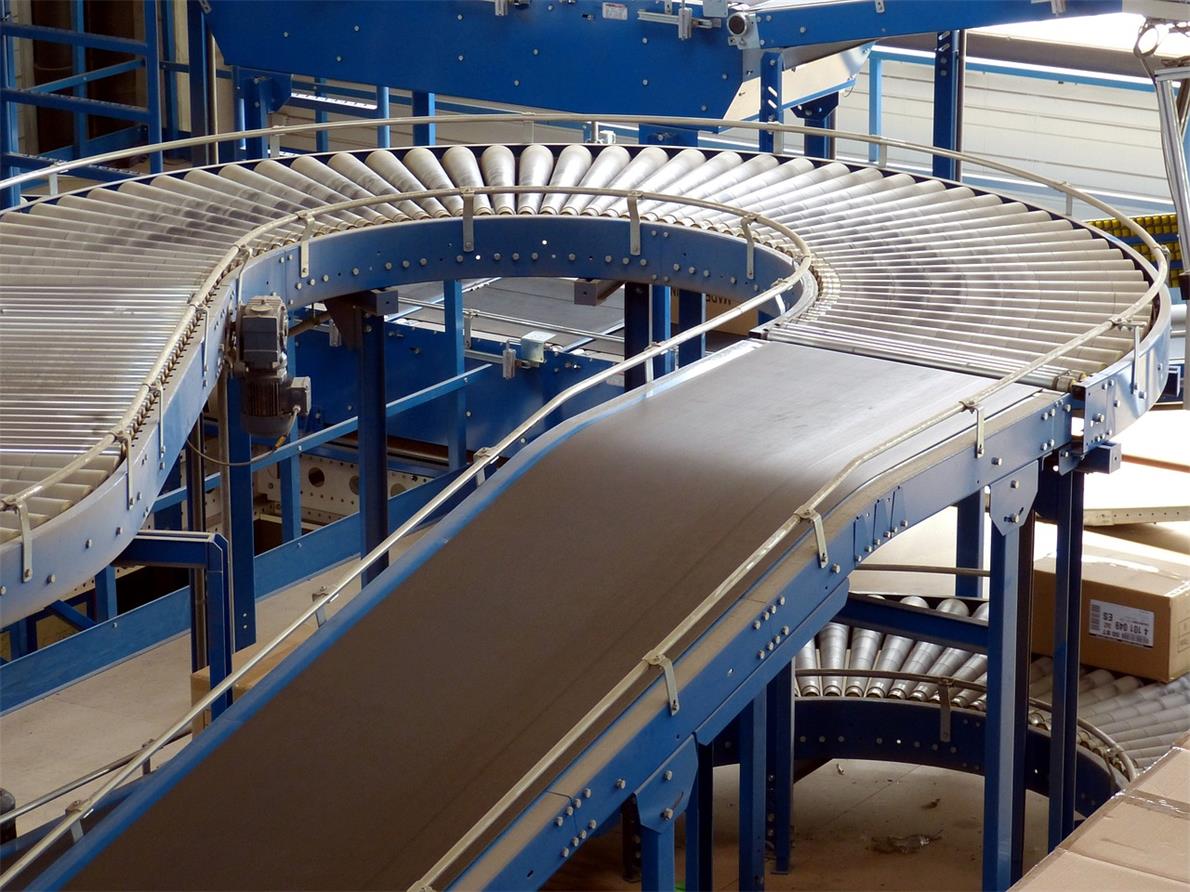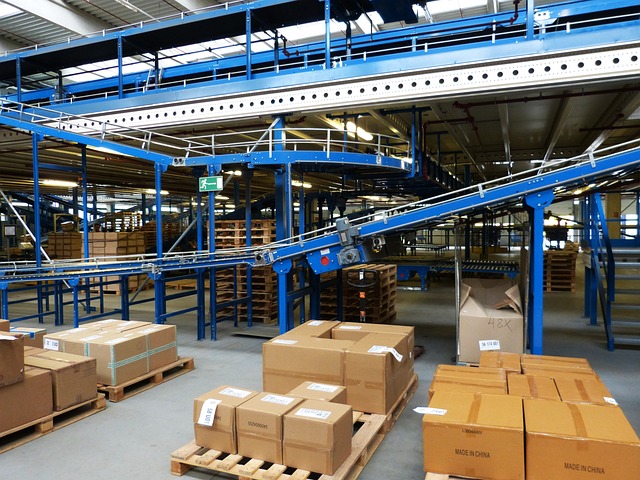Belt conveyor systems are the lifeline of many industries and enable the transportation of materials and products efficiently over long distances. The reliability, precision, and energy efficiency of these systems depends a lot on the choice of motor technology. In recent years, permanent magnet synchronous motors have turned out to be a powerhouse for driving belt conveyors. Permanent magnet synchronous motors have a higher power density, have precise speed and torque control, and possess better energy efficiency; thus, they are ideal for optimization in belt conveyor technologies.

Belt Conveyor Technology and its Challenges
The belt conveyor is one of the major components in the material handling system, serving a very important function: transportation of bulk materials, finished products, and components over long distances. They find their applications in mining, manufacturing industries, logistics, and even agriculture. Generally speaking, however, some challenges with belt conveyor systems do have a bearing on performance, efficiency, and reliability.
Some of the usual problems faced are heavy loads and different material properties. Heavy, big materials are normally moved by belt conveyors, and a great force is normally exerted on the entire system. In addition to that, different materials possess various coefficients of friction, some being abrasive, while some are more flowy and will affect the functioning of the conveyor. As a result, increased production costs result in its aftermath.
Other issues involve belt misalignment and tracking issues. If the belt happens to be misaligned, this results in loads becoming uneven, wear increased, or even the entire system can be damaged. When it comes to tracking, spilling off of the belt may cause mistracking, even failure hence very expensive downtime.
Energy consumption and efficiency, They consume a lot of energy; hence, energy efficiency becomes a top priority. The presence of inefficient motor technologies or a lack of appropriate control systems means energy is wasted at higher operating costs. Such speed and torque control is very crucial in optimizing material handling, too. Poor control could result in product damage, variable flow rates, and inefficient operations. Finally, belt conveyors must be reliable for uptime to keep productivity up. That can imply more frequent maintenance with conventional motors, further increasing the cost and reducing productivity.
From the above, one could notice that the chosen technology of the motor highly impacts the performance and efficiency of the belt conveyor system. Sometimes, old motors may fail to bear the increasing burden of modern demands from their applications and require additional, alternative solutions. This is where PMSMs offer several advantageous qualities to help overcome such challenges by providing optimization to conveyor operation.
Applications of PMSMs in Belt Conveyor Technology
PMSMs for Applications in the Modernisation of Belt Conveyor Technologies Permanent magnet synchronous motors are fast becoming a prime factor for revolutionary changes in belt conveyor technologies. Capabilities and various features of permanent magnet synchronous motors provide different applications for meeting the challenges that have traditionally been faced by simple motor technologies in the entire system of the belt conveyors.
Improved power density, and improved conveyor performance: Permanent magnet synchronous motors boast very high power density and are therefore capable of delivering more power from a smaller, lighter package when compared to conventional motors. This feature enables designing more compact and efficient belt conveyor systems, which again leads to improved performance with less space requirements.
Enhanced speed and torque control capability: Permanent magnet synchronous motors allow for precise and sensitive control of speed and torque. They are thus suitable for applications requiring precise material handling and positioning. Consistent speed and dynamic torque adjustment increase the efficiency and reliability of belt conveyor operations.
Precise positioning and motion control for optimized material handling: Permanent magnet synchronous motors have superior positioning and motion control, hence enabling smooth and precise material handling along the conveyor path. This is very useful in applications that require the precise placement, sorting, or alignment of products, increasing productivity and operational flexibility.
Energy efficiency and cost savings in conveyor operation: Given the high-efficiency rating and advanced control mechanisms, permanent magnet synchronous motors inherently are energy-efficient. Equipped with variable frequency drives and sophisticated control algorithms, permanent magnet synchronous motors will be able to optimize energy consumption in real load and operation conditions, which could ensure significant cost savings with consequent environmental benefits.
Permanent magnet synchronous motors mark a serious step forward in the technology of belt conveyors for solving long-surfaced problems that were not coped with by traditional motor technologies. The applications have a wide range of benefits, from higher power density and control capabilities to energy efficiency and cost savings, thereby positioning permanent magnet synchronous motors as game-changing in modern belt conveyor systems.

Implementation Considerations for PMSMs in Belt Conveyor Systems
The implementation of a PMSM into a belt conveyor system is pretty much a task that can be considered crucial since multiple factors have to be paid attention to guarantee peak performance, reliability, and efficiency. The following are several key considerations for implementation that are considered important for leveraging benefits associated with Permanent Magnet Synchronous Motors for material handling applications.
System Design & Integration:
The permanent magnet synchronous motor has to be appropriately dimensioned concerning specific operational demands, load characteristics, and ambient conditions for a superior outcome of performance and energy efficiency. Meanwhile, compact dimensions and lower weight in comparison with the permanent magnet synchronous motor have to be considered regarding faster acceleration and deceleration, probably possible in the mechanical design process of the conveyor system. Because of this, permanent magnet synchronous motors need to be designed with particular support structures and mounting arrangements suitable for their characteristics.
Control & Drive System:
The VFDs to be applied with PMSM have to be carefully selected in such a way that perfect integration and compatibility with motor control requirements are ensured. Other advanced VFD features, such as sensorless control and regenerative braking, can further improve the overall efficiency and control of the conveyor system. It is also worth noting that the utilization and implementation of advanced control algorithms, as well as software peculiar to the characteristics of PMSMs, becomes necessary with a view to optimization regarding power, torque, and minimization of energy consumption. Using customized control strategies, the positive attributes of permanent magnet synchronous motors can be maximized and adapted to dynamically changing operational needs.
Environmental and Operational Considerations:
Permanent magnet synchronous motors are sensitive to temperature; therefore, corresponding measures in thermal management include cooling systems or methods of heat dissipation to keep them within their optimum operational temperatures. Protective measures should be taken to guard the permanent magnet synchronous motor against dust, debris, and moisture in case the belt conveyor system works in harsh conditions, hence guaranteeing reliable and long-lifetime running.
Maintenance and Maintainability:
It would also be very beneficial to use a condition monitoring system with sensors and predictive maintenance to spot problems in advance, reduce unplanned stops, and even help minimize the cost of maintenance. Good serviceability and efficient maintenance of PMSMs in belt conveyor systems may be achieved by proper training of personnel for maintenance, along with necessary resources regarding technical support.
Security & Compliance:
Operating PMSM motor drive systems for belt conveyors should be designed and maintained in operation according to all relevant safety regulations and standards to such a degree that these motors can operate safely and reliably. The system of emergency shutdown and fault detection should be integrated appropriately over a certain operating cycle in such a way as to reduce potential risks to a minimum for both personnel and equipment.
Thus, the future of PMSM in belt conveyor technologies is bound to be even more sophisticated and developed. Interfaced with advanced control systems, it will offer energy consumption optimization, increased predictive maintenance, and higher overall system performance. Moreover, in most industries of the world, sustainable and eco-friendly solutions are finding a faster pace of emphasis. Permanent magnet synchronous motors will hence play a very important part in the development of energy-efficient and environmentally friendly belt conveyor systems. These will be the future trends and developments that permanent magnet synchronous motors will take in belt conveyor technology. They will raise productivity, improve the efficiency of operations, and help the general development ofpractices abouto material handling for several industries.